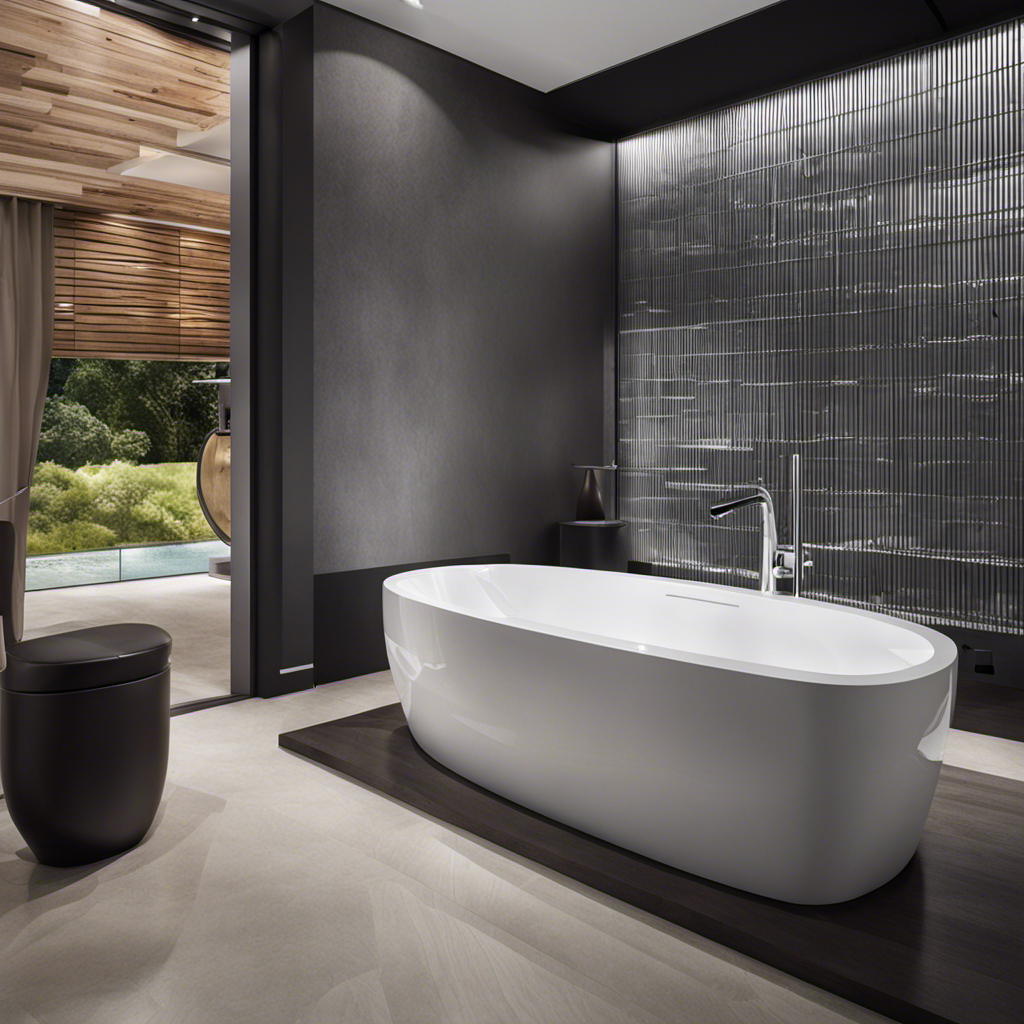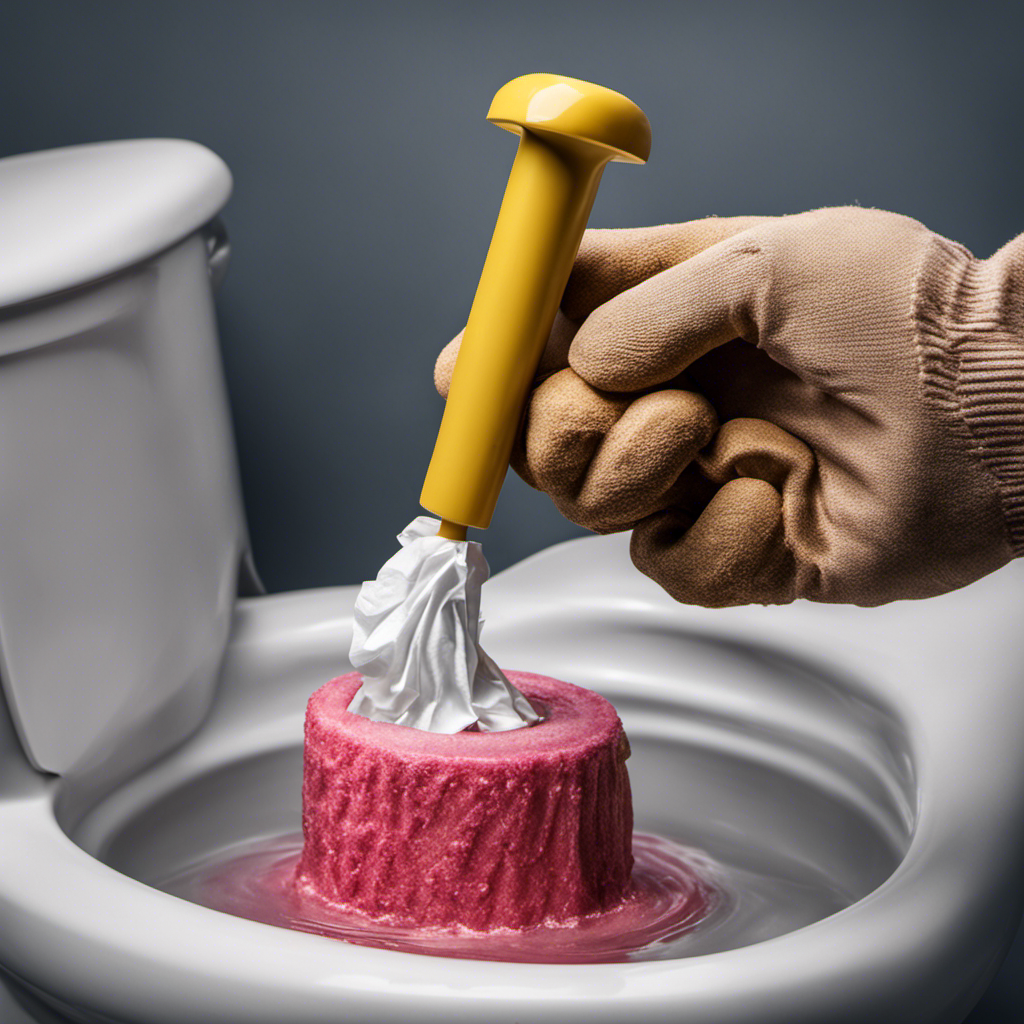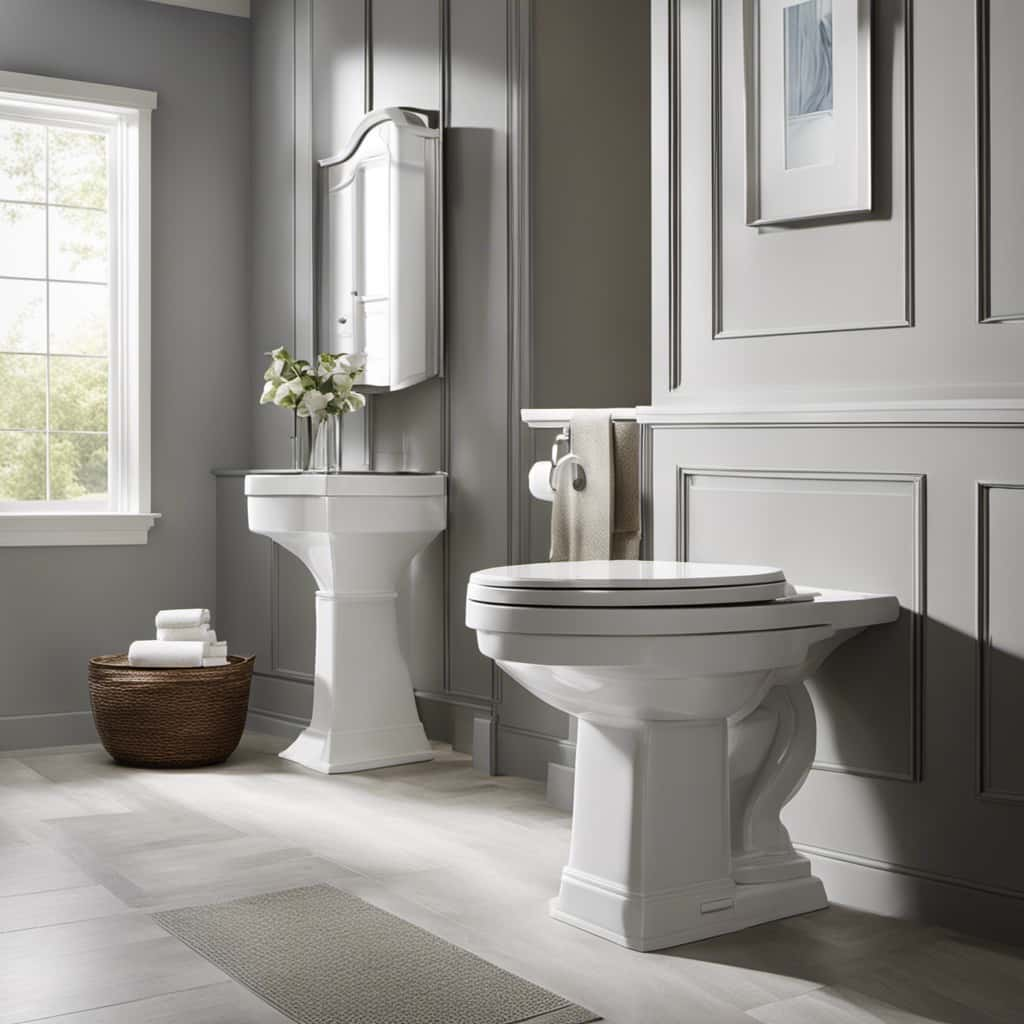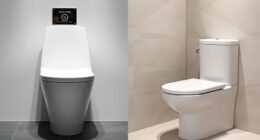Are you tired of wasting water and money with your old toilet? Look no further than the Watersense toilet.
This revolutionary fixture not only saves you water, but also helps protect the environment. With its advanced technology and efficient design, the Watersense toilet is the perfect choice for any eco-conscious homeowner.
In this article, we will explore the history, benefits, and workings of Watersense toilets, as well as provide tips for choosing, installing, and maintaining one.
Get ready to make a difference with your bathroom!
Key Takeaways
- Watersense toilets were introduced by the EPA in response to growing concern over water conservation.
- Watersense toilets use only 1.28 gallons of water per flush, resulting in significant water savings.
- Using Watersense toilets saves water and lowers utility bills while maintaining performance.
- Factors to consider when choosing a Watersense toilet include water efficiency, flushing power, proper installation techniques, and regular maintenance.
History of Watersense Toilets
The history of Watersense toilets can be traced back to the early 2000s when the Environmental Protection Agency (EPA) introduced the program. The evolution of water efficient toilets began as a response to the growing concern over water conservation.
Traditional toilets used a significant amount of water per flush, contributing to water waste. With the EPA’s initiative, manufacturers started developing toilets that used less water without compromising performance. Watersense toilets are designed to use only 1.28 gallons of water per flush, compared to the previous standard of 1.6 gallons.
This reduction has had a significant impact on water conservation, as toilets are one of the largest water consumers in households. The introduction of Watersense toilets has helped save billions of gallons of water, making them an essential tool in promoting sustainability and protecting our water resources.
Benefits of Using Watersense Toilets
Using a Watersense toilet can help you save water and lower your utility bills. These toilets are designed with water efficient technology, reducing water consumption without compromising performance.
By incorporating features like dual flush options, low-flow mechanisms, and improved flushing systems, Watersense toilets can significantly reduce the amount of water used per flush. This not only helps the environment by conserving water resources, but also allows you to save money on your water bill.
On average, a Watersense toilet can save up to 20% more water compared to traditional toilets. With the increasing focus on sustainability and water conservation, switching to a Watersense toilet is a smart and responsible choice for any household or commercial space.
How Watersense Toilets Work
In this section, you’ll learn about the water-saving mechanism of Watersense toilets and how they work.
We’ll explain the benefits of Watersense certification, which ensures that a toilet meets the highest standards of water efficiency.
Additionally, we’ll provide you with installation and maintenance tips to ensure optimal performance and longevity of your Watersense toilet.
Water-Saving Mechanism Explained
A water-saving mechanism in a Watersense toilet helps reduce water consumption. With this innovative technology, you can make a significant impact on the environment while still enjoying the convenience of a modern toilet.
Here’s how the water-saving mechanism works:
-
Dual flush system: Watersense toilets are equipped with a dual flush system, allowing you to choose between a full flush for solid waste and a partial flush for liquid waste. This feature alone can save up to 20% more water compared to traditional toilets.
-
High-efficiency flush: Watersense toilets use advanced flushing technology that ensures a powerful flush while using less water. This means you won’t have to sacrifice performance for water savings.
-
Smart sensors: Some Watersense toilets come with smart sensors that detect when you’re done using the toilet. This eliminates the need to manually flush, reducing water waste even further.
Benefits of Watersense Certification
By choosing a Watersense-certified toilet, you can enjoy the benefits of reduced water consumption and contribute to a more sustainable future.
Watersense certification is a program developed by the Environmental Protection Agency (EPA) to promote water conservation methods and reduce the environmental impact of water usage.
These toilets are designed to use significantly less water per flush compared to traditional toilets. On average, a Watersense-certified toilet uses about 1.28 gallons of water per flush, while older models can use up to 3.5 gallons.
This reduction in water usage not only helps conserve water resources but also lowers your water bill. Additionally, by using less water, you are reducing the strain on wastewater treatment plants and minimizing pollution in rivers, lakes, and oceans.
Choosing a Watersense-certified toilet is a simple yet impactful way to make a difference in water conservation efforts and contribute to a more sustainable future.
Installation and Maintenance Tips
Now that you understand the water-saving benefits of Watersense-certified toilets, let’s talk about installation and maintenance tips.
By following these installation techniques, you can ensure your toilet operates efficiently and maximizes water savings:
-
Properly position the wax ring: Place the wax ring evenly on the flange to create a watertight seal.
-
Secure the toilet tightly: Use the correct bolts and nuts to secure the toilet to the flange, ensuring it doesn’t wobble or leak.
-
Adjust the water level: Make sure the water level in the tank is set according to the manufacturer’s instructions to optimize flushing efficiency.
Regular maintenance is also crucial to keep your Watersense toilet in top shape. Check for leaks, clean the bowl regularly, and replace any worn-out parts promptly to maintain its water-saving benefits.
Factors to Consider When Choosing a Watersense Toilet
When choosing a Watersense toilet, it’s important to consider factors such as water efficiency and flushing power.
Watersense toilets are designed to use less water per flush compared to traditional toilets, which can save you money on your water bill and help conserve water.
The water efficiency of a Watersense toilet is measured in gallons per flush (GPF). Watersense toilets typically use no more than 1.28 GPF, while traditional toilets can use up to 3.5 GPF. This significant difference in water usage can result in significant water savings over time.
Additionally, Watersense toilets are designed to have powerful flushes, ensuring effective waste removal with less water.
When comparing Watersense toilets to traditional toilets, it’s clear that the former offers superior water efficiency and flushing power, making it an excellent choice for both your wallet and the environment.
Installation and Maintenance of Watersense Toilets
When it comes to installing a Watersense toilet, it’s important to follow proper installation techniques to ensure optimal performance. This includes correctly aligning and securing the toilet bowl and tank, as well as properly connecting the water supply.
Routine maintenance is also key in keeping your Watersense toilet in top shape. Regularly checking for leaks, cleaning the bowl and tank, and inspecting the flush mechanism will help prolong the lifespan of your toilet and ensure it continues to conserve water effectively.
Proper Installation Techniques
To ensure proper installation of your WaterSense toilet, make sure to follow these techniques:
-
Level the toilet: Use a carpenter’s level to ensure that the toilet is level from side to side and front to back. This will prevent any leaks or rocking once the toilet is in use.
-
Properly tighten the bolts: Be sure to tighten the bolts that secure the toilet to the floor evenly and snugly. Over-tightening can crack the toilet, while under-tightening can lead to leaks.
-
Use the right seal: Use a wax ring or a rubber gasket to create a watertight seal between the toilet and the floor. Make sure it is properly aligned before setting the toilet in place.
By following these techniques, you can avoid common installation mistakes and ensure that your WaterSense toilet functions properly from the start.
If you encounter any toilet troubleshooting issues, refer to the manufacturer’s instructions or consult a professional plumber.
Routine Maintenance Tips
Regular maintenance is essential for keeping your bathroom fixtures in good working condition. When it comes to your toilet, troubleshooting common problems can save you time and money.
One of the most common issues is a running toilet. This can be caused by a faulty flapper valve or an improperly adjusted fill valve. To fix this, check the flapper for any signs of wear and tear and replace if necessary. Also, ensure that the fill valve is adjusted correctly to control the water level in the tank.
Another common problem is a clogged toilet. To unclog it, use a plunger or a toilet auger, making sure to apply steady pressure and avoid using harsh chemicals.
Comparison of Watersense Toilets Vs. Traditional Toilets
If you’re looking to compare Watersense toilets to traditional toilets, you’ll find that Watersense toilets are more water-efficient and can help you save on your water bills.
Here’s a list of reasons why Watersense toilets are a better choice when it comes to toilet efficiency and water consumption:
-
Water-saving technology: Watersense toilets are designed to use less water per flush, typically around 1.28 gallons or less, compared to traditional toilets that can use up to 3.5 gallons per flush.
-
Environmental impact: By using less water, Watersense toilets contribute to water conservation and help reduce the strain on local water resources.
-
Cost savings: With their water-saving features, Watersense toilets can significantly reduce your water consumption, leading to lower water bills over time.
Conclusion
Congratulations! You’ve now unlocked the secrets of Watersense toilets, symbolizing your journey towards a more sustainable future.
By choosing these innovative toilets, you are actively contributing to water conservation efforts. Their efficient flushing mechanisms and eco-friendly features make them the perfect choice for any environmentally conscious individual.
Remember, every drop counts, and with Watersense toilets, you are making a profound impact. Embrace this new era of sustainable living and inspire others to follow in your footsteps.
Start saving water today!










